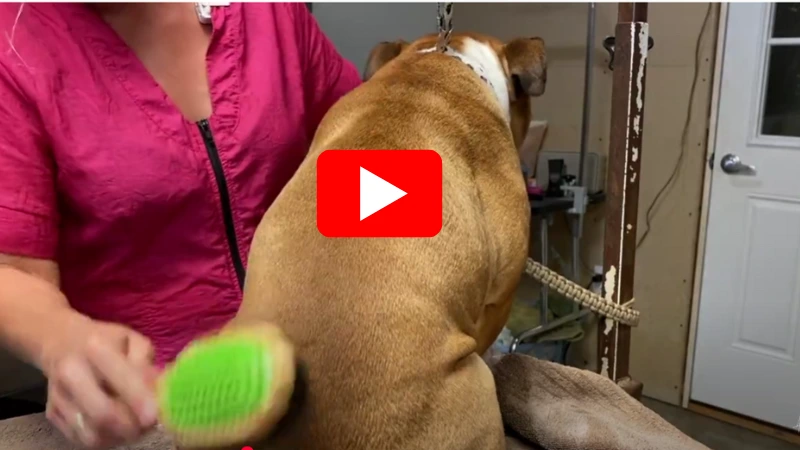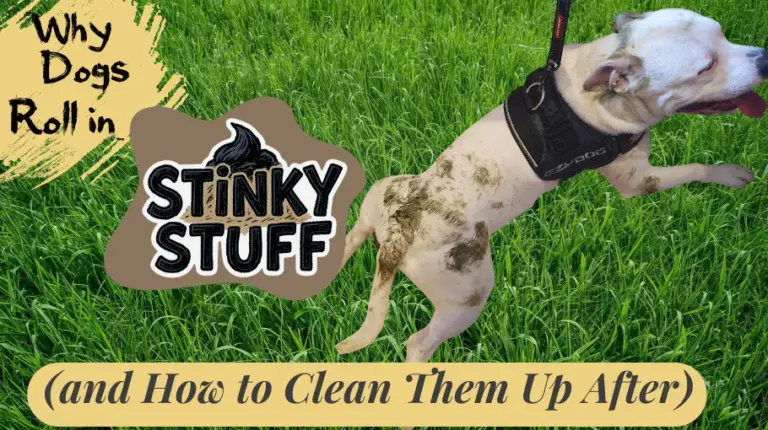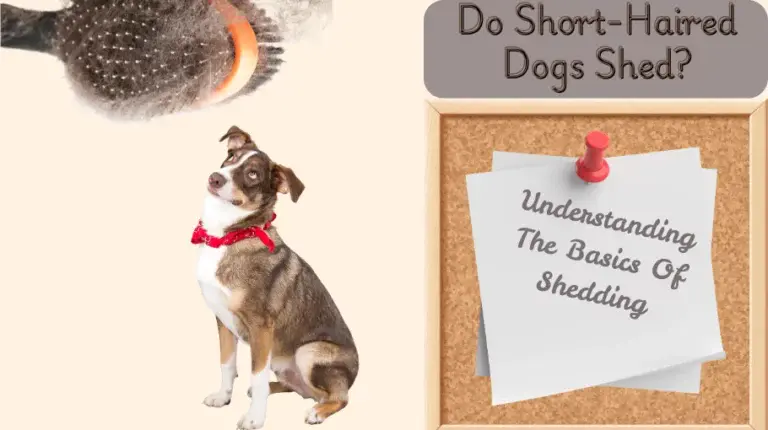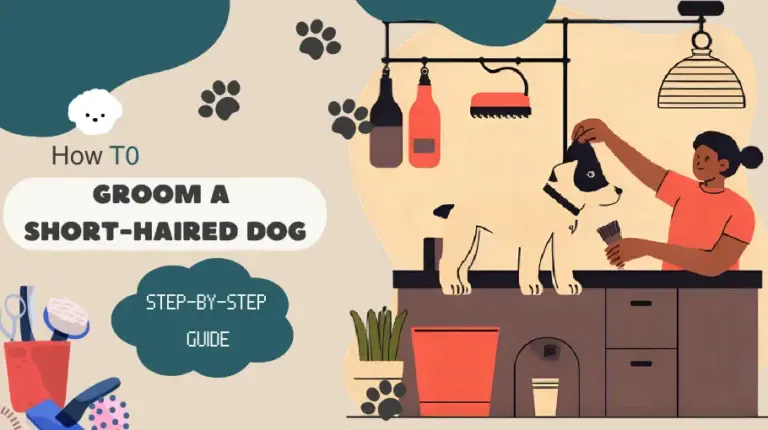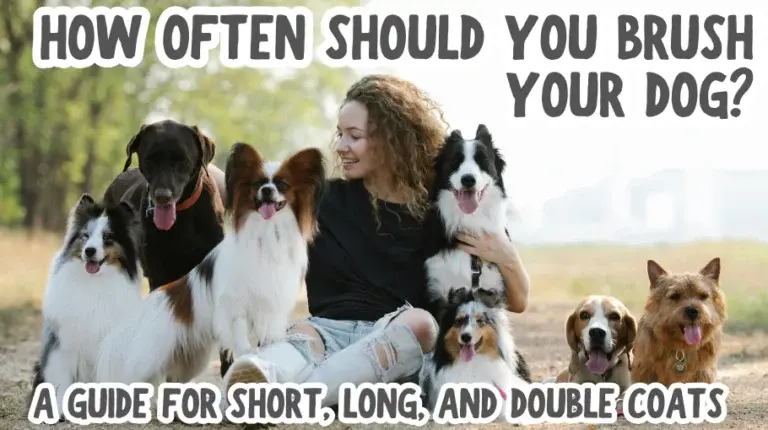Safer Ways to Handle Short-Haired Dog Shedding
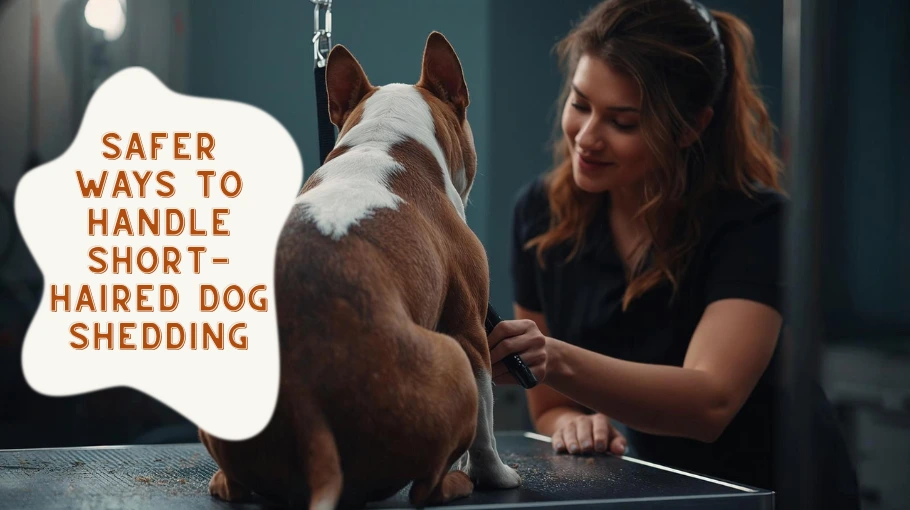
Seeing dog hairs all over the house can be frustrating. Many owners assume that a de-shedding brush is the quick fix, but for short-haired dogs, the reality is a little different.
Grooming regularly is what actually prevents hairs from scattering around the home. De-shedding tools are designed to remove undercoat hairs — something most short-haired breeds don’t have — and using them without understanding the dog’s sensitive skin can do more harm than good.
Short-haired dogs shed naturally, just like any other breed, but the hairs are more visible because they don’t get trapped in an undercoat. Regular brushing helps catch these loose hairs before they spread, keeping both your home and your dog more comfortable.
Trapped dander — tiny flakes of dead skin — can also irritate the skin, prompting more scratching and causing even more hairs to fly around. This makes consistent grooming not just a matter of convenience, but also a key part of your dog’s health and comfort.
Understanding the difference between dog hair and fur is part of the puzzle.
Single-coated breeds, often referred to as having “dog hair,” shed thinner hairs that are easy to remove with gentle brushing.
Double-coated breeds have a dense undercoat, sometimes called “fur,” which is where de-shedding tools are most effective.
Recognising this distinction can help you choose the safest grooming approach for your dog, rather than relying on tools designed for a coat type they don’t have. For more on normal and healthy shedding, check out ‘Dog Brushes and Shedding: Secrets to a Healthy Coat‘, because it may surprise you to learn what’s normal.
Table of Contents
Understanding Shedding in Short-Haired Dogs
Dog Hair vs Fur
Different coat types shed differently. Single-coated breeds, often referred to as having “dog hair,” have thinner, shorter hairs that fall out individually. These hairs are easy to remove with regular brushing and rarely form mats or clumps.
Double-coated breeds, on the other hand, have a dense undercoat, (which is what tends to be referred to as “fur,”) and it sheds in thicker layers and can trap loose hairs if not properly groomed.
This is why de-shedding tools like the FURminator are most effective for double-coated breeds — they’re designed to reach the undercoat and remove hairs before they scatter. For short-haired breeds, aggressive use of these tools isn’t necessary and can even irritate sensitive skin.
Dander and Its Role in Shedding
Shedding isn’t just about hair. Dander — tiny flakes of dead skin — accumulates when a dog isn’t brushed frequently. This can lead to skin irritation, prompting scratching and licking, which in turn sends more hair flying around your home.
Regular brushing not only removes loose hairs but also helps distribute natural oils, keeping the coat and skin healthy. By staying consistent, you prevent dander build-up, reduce itching, and minimise the mess around your home.
Seasonal Patterns
Even short-haired dogs follow seasonal shedding cycles. Most will shed more heavily in the spring and autumn as they adjust to changing temperatures. While the hairs are thinner than those of double-coated breeds, the increase in shedding can still be noticeable — especially on furniture, clothing, and floors.
Understanding these patterns allows you to schedule grooming sessions strategically, staying ahead of the peak shedding periods rather than reacting after the hair has already spread.
Why De-Shedding Brushes Aren’t Always the Answer
I see de-shedding and brushing or grooming as different things. Let me explain:
Shedding and Loose Hair
When a dog sheds, the process is natural — each hair goes through a growth cycle before becoming loose and ready to fall out. Tools like the FURminator work by collecting those already-loose hairs in a controlled way, keeping them off your floors and furniture. That makes them useful for double-coated breeds with dense undercoats, but it’s not the same thing as preventing shedding altogether.
Risks for Short-Haired Dogs
Short-haired breeds, like Staffies, don’t have a thick undercoat. Their coats are made up of a single layer of thin hairs, which are more prone to clinging onto fabrics and surfaces.
Using aggressive de-shedding tools on this kind of coat can do more harm than good, irritating sensitive skin and making dogs reluctant to be groomed in the future.
I learned this first-hand when I mistakenly used a slicker brush on our already nervous pup — he hated it. I had to rebuild his trust by using a pair of dog brush gloves to desensistise the anxious pup, easing back into the routine.
What the Popular Claims Really Mean
The FURminator’s headline claim is that it “reduces loose hair from shedding by up to 90%.” The important detail is in those five words: reduces loose hair from shedding. It doesn’t stop the shedding cycle itself — it simply captures the hairs that were already ready to fall.
Once you understand this, it’s easier to see why these tools are marketed heavily for breeds with undercoats, where loose hair tends to build up in thick layers.
For short-hair dog grooming, the safer choice is a rubber or soft-bristled brush, or even grooming gloves, which remove loose hairs without scraping the skin. Those are the best dog grooming tools for short-haired breeds. These gentler brushes also help distribute natural oils, keeping the coat healthy and making the grooming process more enjoyable for your dog.
Practical Tips for Managing Shedding of Short Hair Dogs
If your experience was anything like mine — expecting short-haired dogs to be low maintenance, only to find the opposite — don’t worry. Shedding is completely manageable with the right approach.
The two basics to get right are a soft brush and a coat-appropriate shampoo. Beyond that, the biggest hurdle is simply getting your dog comfortable with regular grooming. It doesn’t take long, and it’s not something you’ll be doing every day.
With our short-haired Staffies (one of whom has a surprisingly thick coat), a once-a-week quick brush with a rubber curry brush is usually enough to keep on top of loose hairs.
For more details, I’ve put together a list of 9 dog brushing tips that will make the process easier and more enjoyable for both you and your dog.
Why Short-Haired Dogs Can Seem to Shed Excessively
Short-haired dogs can and do shed a lot — and that’s completely normal. What matters most is the health of their skin. Breeds like Staffordshire Bull Terriers are especially prone to skin issues because they love to explore, and with that comes constant exposure to allergens.
If those allergens aren’t brushed out, irritation builds up. Dogs scratch more, which spreads loose hair everywhere and makes the problem worse. Regular brushing isn’t just about keeping the house cleaner — it’s about keeping your dog’s skin comfortable and their coat healthy.
Watch the video below from Amy, a professional groomer, where she explains coat types and grooming. I’ve set it to begin at 2:27, right when she covers “smooth and short-coated dogs.” It’s highly educational — at least, I found it was.
FAQs About Short-Haired Dogs and Shedding
Do dogs shed less if you brush them?
Brushing doesn’t stop shedding — it’s a natural process — but it does make a huge difference in how much loose hair ends up around your home. A quick weekly session with a soft or rubber brush collects hairs before they fall, while also keeping the skin comfortable.
What do groomers do to de-shed dogs?
Professional groomers use a mix of bathing, blow-drying, and brushing techniques to lift out loose hairs. For double-coated breeds, they may use undercoat rakes or de-shedding tools. For short-haired breeds, the focus is usually on gentler brushes and proper shampooing.
What time of year do dogs shed the most?
Most dogs shed year-round, but it often ramps up during seasonal changes — especially spring and autumn. Short-haired breeds don’t “blow coat” like double-coated dogs, but you’ll still notice heavier shedding when the seasons shift. Regular brushing helps you stay ahead of it.
Bottom Line
Shedding is normal and healthy for all dogs, including short-haired breeds. The key is managing it safely with gentle, consistent grooming.
Avoid over-reliance on aggressive de-shedding brushes and explore safe brushing routines to keep your dog’s coat and skin healthy. For my top picks and guidance, check out the best dog grooming brushes for short-haired breeds.
Share your experiences in the comments below! What breed do you have, and which brushing routines or tools have worked best for you?

